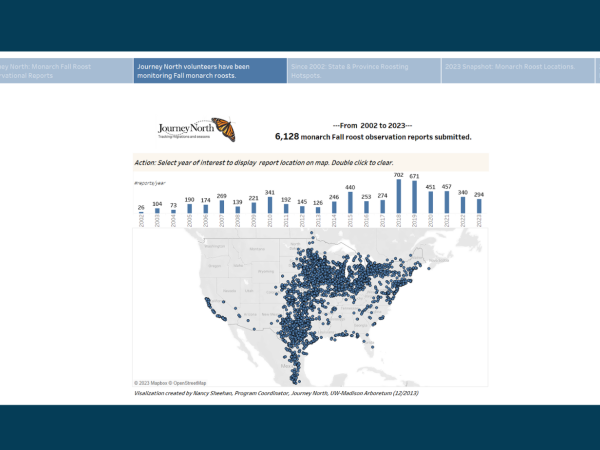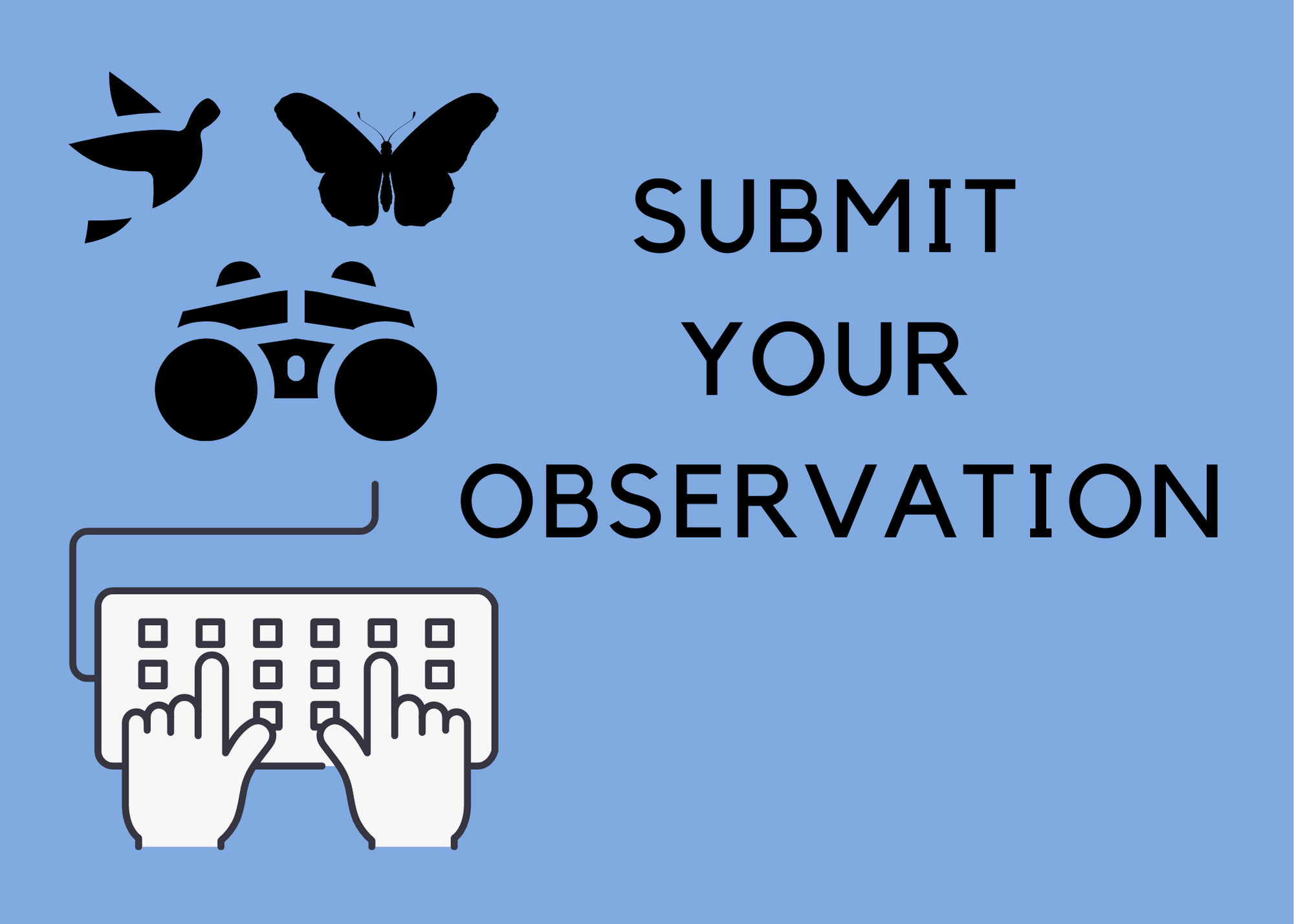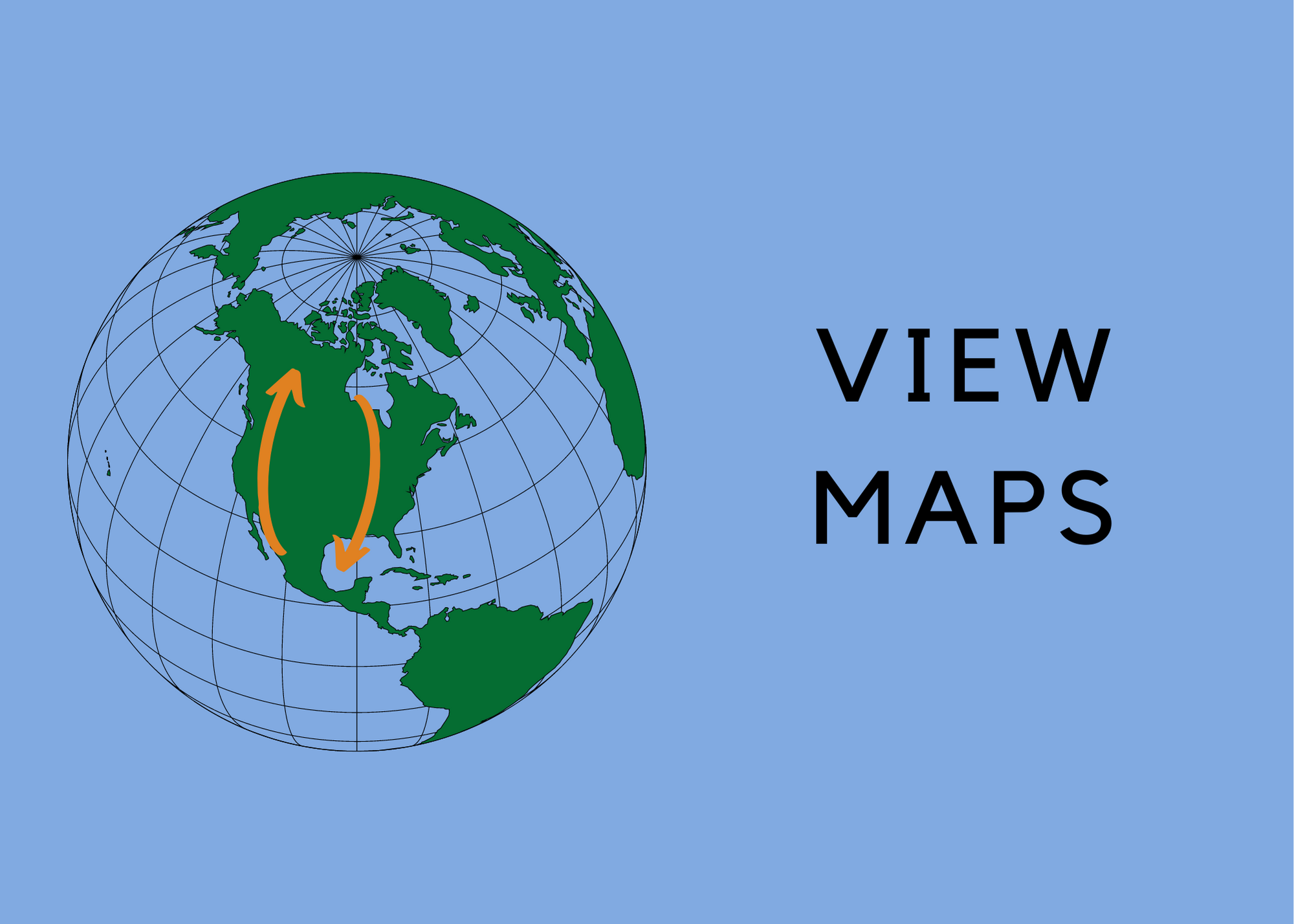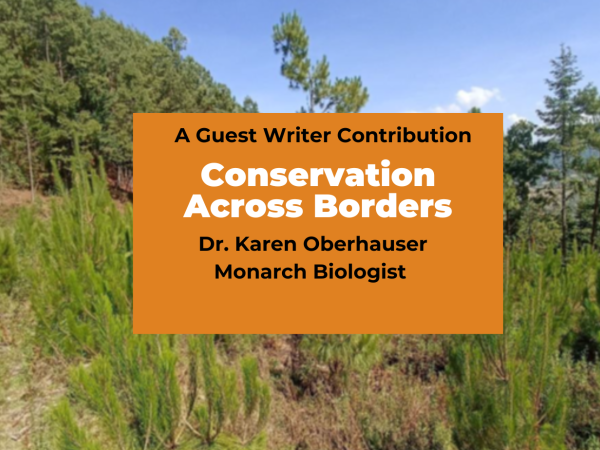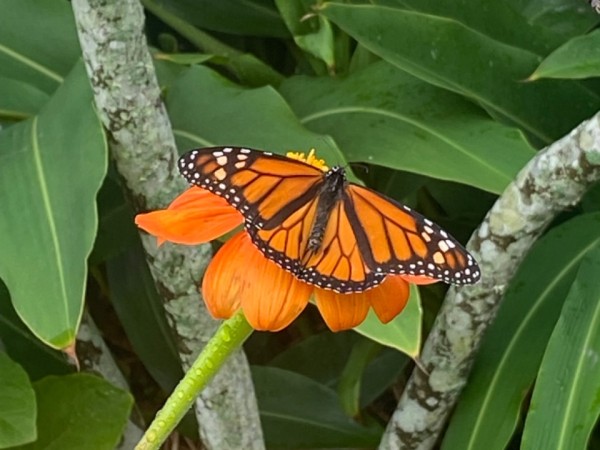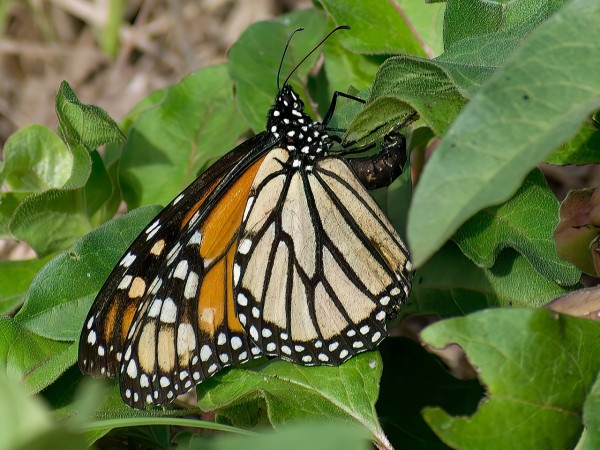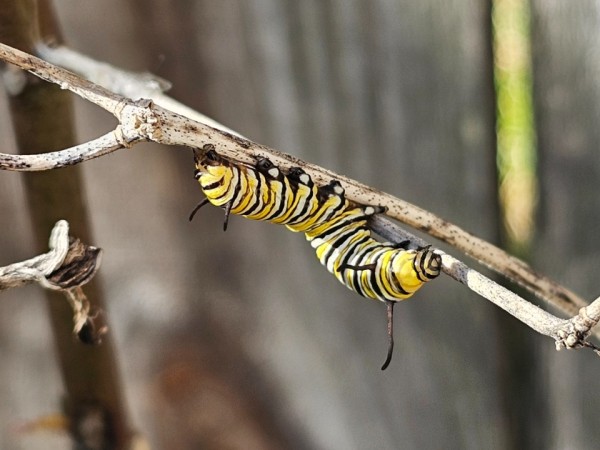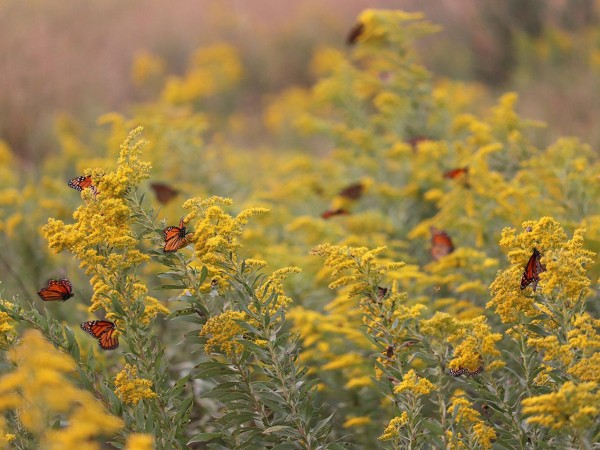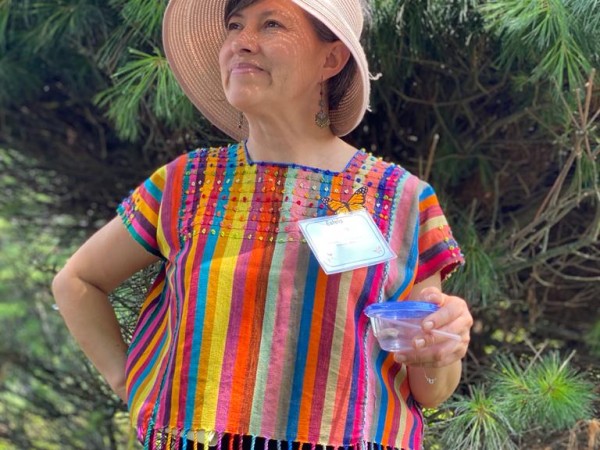Monarchs and Trees: Exploring Connections.
With fall migration over and spring migration still months away, December is a great time to reflect on the importance of trees to monarchs during fall migration and overwintering. This issue features contributions from several guest writers, a summary of volunteer fall roost reports and an invitation to continue to report monarch observations.
Monarch Roosts and the Tree Connection
With fall migration over and spring migration still months away, December is a great time to reflect on the importance of trees to monarchs during fall migration and overwintering. Monarchs only migrate during the day. At sunset, monarchs must find shelter to rest during the night. These stopover sites are critical to the success of the monarch fall migration. At these sites, monarchs settle on trees or other vegetation forming tight clusters that are generally considered roosts. Despite growing research on monarch behavior, aspects of monarch fall roosting behavior remain ripe for further study. Questions persist: Why do monarchs, typically solitary during the day, cluster together at night? How do monarchs locate roosts for clustering together? Where are these roosts, and is there fidelity to specific sites? What tree species are commonly used for monarch roosting? Are there common characteristics of these roost sites (for example wind direction and proximity to nectar and water sources)? Are there tree species commonly chosen by monarchs for roosting? Are there consistent characteristics of these sites, such as wind direction and proximity to nectar and water sources?
Nancy Sheehan provides a snapshot of monarch roost data with a focus on roost locations since 2022.
Since its launch in 2002, the monarch fall roost monitoring project by Journey North has been powered by the dedicated efforts of volunteers. With a remarkable 6,128 observational reports submitted, these volunteers provide crucial details about roost locations, tree/shrub species, micro-climate conditions, and landscape features such as proximity to nectar and water resources. This information significantly contributes to our understanding of monarch fall roosting behavior. Nancy Sheehan, Journey North's program coordinator, highlights the value of this volunteer-contribute data in a visualization focus on monarch roost location information. Please note that this visualization is best viewed via your desktop browser.
Guest writer Dr. Patrick A. Guerra describes the importance of volunteers in answering questions about monarch fall roosting behavior.
Dr. Patrick A. Guerra, assistant professor at the University of Cincinnati and a neuroscientist and urban ecologist, explains how the contributions of community scientists in participatory science projects, such as Journey North, can help us answer the ultimate question in monarch butterfly migratory biology: How do monarchs find their overwintering sites? Delve into the secrets of roosting data and the vital environmental cues that guide monarch butterflies on their epic journey. Journey North, the National Wildlife Federation, and dedicated researchers are working to unravel this mystery of monarch migration. Your observational reports could provide critical data that will help to preserve the seasonal migration of monarchs.
Guest writer Dr. Karen Oberhauser explores reforestation efforts in and near the Monarch Butterfly Biosphere Reserve
Explore the vital role of forest reforestation near the Monarch Butterfly Biosphere Reserve (MBBR) in central Mexico. Dr. Karen Oberhauser, former director of the UW-Madison Arboretum and monarch biologist, describes the efforts of Alternare A.C., a Mexican non-profit organization, working tirelessly for over two decades to support monarch conservation. Learn how reforestation initiatives, involving local communities and indigenous groups, are crucial for preserving monarch overwintering habitats.
Eduardo Rendón-Salinas, Director del Programa Ecosistemas Terrestres, WWF México, shares an inspiring article about collaborative conservation efforts.
Do you want to know more about conservation efforts in Mexico? Don’t miss reading this article by Rendón-Salinas, E., Alonso, A., García-Serrano, E., Valera-Bermejo, A., and Quesada, M. titled 'The monarch butterfly in Mexico: a conservation model' that appeared in Current Opinion in Insect Science, 2023, 60:101112. As the authors note in their abstract: “Each fall, millions of monarch butterflies (Danaus plexippus L.) travel from Canada and the United States to overwinter in Mexico and California. In 2022, the IUCN listed migratory monarchs as endangered because of their population decline. The main accepted drivers are the widespread use of herbicides, the effects of climate, and land use change that causes habitat loss. We analyzed the main actions taken to officially protect the overwintering sites and the migration phenomenon with the establishment of the Monarch Butterfly Biosphere Reserve in 2000. The conservation of the monarch overwintering sites in Mexico is an example of continuous work from their discovery to the present. We highlight the importance of monitoring the areas covered by overwintering monarchs in Mexico. These colonies represent the largest concentrations of monarch populations in the world. In the last 10 years, the average area covered by monarchs was 2.72 ( ± 0.47 SE) hectares."
Monarchs Overwinter in Southeastern U.S.
Journey North encourages volunteers to report winter monarch sightings in the Southeastern U.S. from December through March. If you live in Texas, Louisiana, Mississippi, Alabama, Florida, Georgia, South Carolina, and North Carolina, we want to hear from you. See Instructional Flyer. Your observational data will be used to assess how the geographic distribution of monarchs might be changing. Are monarchs resting, nectaring, mating, laying eggs, clustering? This information will allow us to better understand what proportion of the winter population of monarchs in the southeastern U.S. are breeding versus wintering in a non-breeding state.
VM in Beaufort, SC: "At least one as I look out my office window at my milkweed. Two caterpillars. One I moved to a leaf rather than the stalk, but it decided it wanted to be in a different area. The caterpillars prefer to be on the yellow and orange selection rather than on the yellow that I originally planted. The butterflies like both. So many pods bursting open right now. As I watched, the butterfly flew to the artificial poinsettia and landed. Then flew."(12/10/2023)
P in Baton Rouge, LA: "One male taking nectar from a Mexican Sunflower." (12/02/2023)
Peggy in Daphne, AL saw one monarch flying by. (12/11/2023)
Roberto in San Benito, TX: Monarch laying eggs on zizotes milkweed. (12/03/2023)
Ellen in Charleston, SC: I spotted 4 larvae in the milkweed along our protective fence. (12/12/2023)
This targeted study is a collaborative effort involving several partners, including the Georgia DNR, Monarch Across Georgia, and the University of Georgia Altizer Lab. Read our recent press release highlighting the collaborative nature of this targeted study.
Monarchs on the Islands of the Caribbean
During the winter months, Journey North observers usually report monarch activity in the Islands of the Caribbean. If you live in this region, let us know if you are seeing monarchs.
Lisa in Palmarejo, PR: "found one dead with damaged wing in addition the the 3 in this report. (12/07/2023)
Lowie in Coxen Hole, Bay Islands Department: "Two have stopped in...feeding on coral flowers." (12/11/2023)
Marilynn in Spanish Wells: When I arrived this week to my house in The Bahamas, a couple of Monarch Butterflies, one 5th instar cat, and several eggs were here to greet me. The momma laying eggs looked like she’d traveled far. 12/08/2023
From the Monarch Butterfly Biosphere Reserve
El Rosario and Sierra Chincua Sanctuaries hosted opening ceremonies to welcome visitors to the Monarch Butterfly Biosphere Reserve. Estela Romero describes the festivities and monarch behavior.
Letter from Estela Romero: Real Winter Weather for Monarchs
Carta de Estela Romero: Un Verdadero Tiempo de Inviero Para Las Monarcas
More videos have been added to our Journey North's YouTube channel. Enjoy scenes from the Sanctuaries.
Playlist: 2023-2024 Overwintering Season at the Monarch Butterfly Biosphere Reserve, Mexico
Happy Winter Holiday
Thank you for participating in Journey North's Monarch & Milkweed Project. We will be taking a short break during the winter holidays. Happy new year and see you in 2024!
